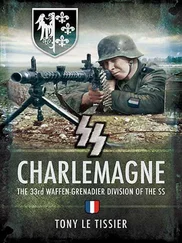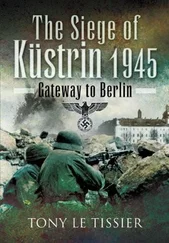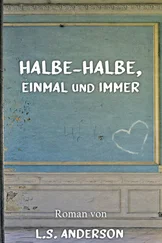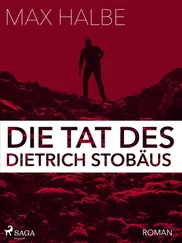Even if one or another air drop had succeeded in the following days, it would hardly have been of much account for the surrounded troops.
In addition to the Soviet forces already deployed, some special artillery units were brought in, and a total of six air corps from 2nd and 16th Air Armies. In all some 280,000 men, 7,400 guns and mortars, 280 tanks and SPGs, and 1,500 aircraft were now pitted against 9th Army. Of particular significance was the deployment of the 1st Guards Breakthrough Artillery Division on 25 April. This was one of the Stavka reserve formations normally allocated only to support specific break-through battles at the beginning of a major operation. However, after the successful breach of the Oder–Neisse defences in Operation Berlin, it was realised that there would be no further requirement in this particular role and these divisions were reallocated to the fronts with which they had fought the opening battle.
Koniev had already detached 19th Guards Mortar Brigade to support 3rd Guards Tank Army in Berlin, but the remainder of Guards Major-General V.B. Husid’s 1st Guards Breakthrough Artillery Division was now sent to support 3rd Guards Army against the 9th Army pocket opposite Halbe and Märkisch Buchholz. Divisional headquarters was established at Briesen and the subordinate formations and units allocated in direct support of the infantry formations in Army Artillery Groups (AAGs) and Divisional Artillery Groups (DAGs) as follows:
| AAG 3rd Guards Army |
98th Heavy Howitzer Artillery Brigade |
| AAG att. 120th Rifle Corps |
1st Guards Cannon Artillery Brigade |
| DAG, 197th Rifle Div |
3rd Light Artillery Brigade (120th Rifle Corps) |
| 167th & 200th Regiments |
| 16th Heavy Mortar Brigade |
| DAG, 329th Rifle Div |
2nd Guards Howitzer Brigade (21st Rifle Corps) |
| 169th, 203rd & 359th Regiments |
| 30th Mortar Brigade |
| 146th, 191st & 501st Regiments |
This system greatly increased the firepower of the existing divisional artillery groups in dealing with local incidents, while enabling coordination to provide a massive artillery concentration when necessary. All artillery units were allocated standing barrage, concentrated fire and moving defensive fire target areas. The batteries were protected by anti-tank barriers and given sectors for firing over open sights should German tanks break through to them, and special provision was made for fighting at night. The heaviest guns of the 98th Heavy Howitzer Artillery Brigade were located immediately behind the 21st Rifle Corps facing Halbe. [12] Domank, ‘The 1st Guards Breakthrough Artillery Division at Halbe’.
The troops of 1st Ukrainian Front built defences along the anticipated breakthrough route from Märkisch Buchholz to Luckenwalde, three engineer brigades laying some 40,000 mines between them and erecting numerous barricades reinforced with explosives along a 12-kilometre strip.
The 3rd Guards Army was ordered:
• concentrate a division in the Teupitz area as a reserve.
• occupy all woodland tracks.
• establish strongpoints along the Berlin–Cottbus autobahn and to reinforce this area with artillery units.
• place strong anti-tank defences in the Tornow–Neuendorf sector, concentrating two anti-tank artillery regiments there.
• concentrate one division in the Brand–Staakow–Wolzow [Waldow?] sector and another in the area Neuendorf–Schönwalde.
• concentrate 2nd Tank Corps as a mobile reserve in the same area, and a regiment or brigade for the same purpose in the Teupitz area.
• to erect strong barriers in the Lübben–Teupitz sector. [13] Lakowski/Stich, Der Kessel von Halbe 1945 , pp. 65–6.
This concentration of several divisions in the rear of 3rd Guards and 28th Armies provided sufficient resources to establish a second cordon backed by reserves, with 28th Army’s 38th Guards Rifle Corps deployed with its 96th Guards Rifle Division near Golssen, its 50th near Baruth and its 54th by Lindenbrück. Meanwhile 3rd Guards Army’s 76th Rifle Corps was detailed to attack in the general direction of Straupitz–Schlepzig and to cooperate closely with 1st Byelorussian Front’s 33rd Army on its right. [14] Ibid ., pp. 63–6.
A major factor that might have helped the break-out to succeed was the element of surprise, but this was denied by the Red Army’s complete air superiority. The Red Air Force had identified the German movement towards Märkisch Buchholz, Löpten and Halbe, as well as the concentration of troops and materiel on the western edge of the pocket on the day before. This resulted in attacks from 4th Air Bomber Corps, mainly from 70 twin-engined Pe-2s, on the identified target. [15] The Pe-2 was named Peshka after its designer, Vladimir M. Petlyakov, and was a dive-bomber with a three-man crew, armed with six machine guns and 1,000 kg of bombs.
Artillery fire met the marching columns mixed with the refugee treks and hit their assembly and camping areas. Chaos reigned as shot-up tanks, burning SPGs, abandoned vehicles and wrecked horse-drawn equipages strewed or blocked the routes. This combination of air attacks and artillery strikes repeatedly forced the troops to take cover, and traffic jams became more frequent on the congested roads and tracks. The important bridges across the Dahme at Märkisch Buchholz were hit, making access to Halbe more difficult. It was only by making detours and taking their time that the troops were able to make progress through the press of refugees. The important elements of surprise with a coordinated attack were thus lost, severely reducing any chance of success.
Busse’s instructions for the break-out that day appear to have been hasty, impromptu and ill-considered. Lack of reconnaissance and operational intelligence meant that he had no idea of the strength of the Soviet forces that now faced him, and his own forces were still too widely dispersed to be able to take advantage of a successful breach of the enemy lines in any numbers. In ignoring the fact that the refugees’ desperation to get away from the Russians was just as strong as that of his soldiers, he was making a serious mistake.
Seizing on Battlegroup von Luck of the 21st Panzer Division, which had only reached him that day, he promptly took it under his immediate command. This battlegroup consisted mainly of Colonel Hans von Luck ’s 125th Panzergrenadier Regiment, accompanied by the remaining Panther tanks of 22nd Panzer Regiment. Busse’s plan was for two armoured battlegroups to break out simultaneously, secure the nodal point of Baruth and obtain use of the roads leading west from there to Jüterbog and Luckenwalde. These attacks would be led by Battlegroup von Luck from Halbe and Battlegroup Pipkorn from further south.
Busse’s orders to von Luck were as follows:
Tonight at 2000 hours you will attack with your battlegroup and all available armoured vehicles allocated to you westward over the Dresden–Berlin autobahn in the Luckenwalde area in the rear of the 1st Ukrainian Front attacking Berlin. The break-out point is to be kept open to enable the following elements of the 9th Army to reach the west on foot. This is not open to the civilian population: thousands of refugees would hamper the operation. [16] Von Luck, Gefangener meiner Zeit , pp. 272–3.
Similarly, Battlegroup Pipkorn , led by SS-Colonel Rüdiger Pipkorn , and consisting of the remains of his 35th SS Police Grenadier Division and the remaining tanks of the 10th SS Panzer Division Frundsberg , was to strike out westward from Schlepzig, north of Lübben. Pipkorn happened to be an old friend of von Luck ’s from their recruit days, but had more recently been compulsorily transferred as a General Staff officer to the Waffen-SS.
Читать дальше












